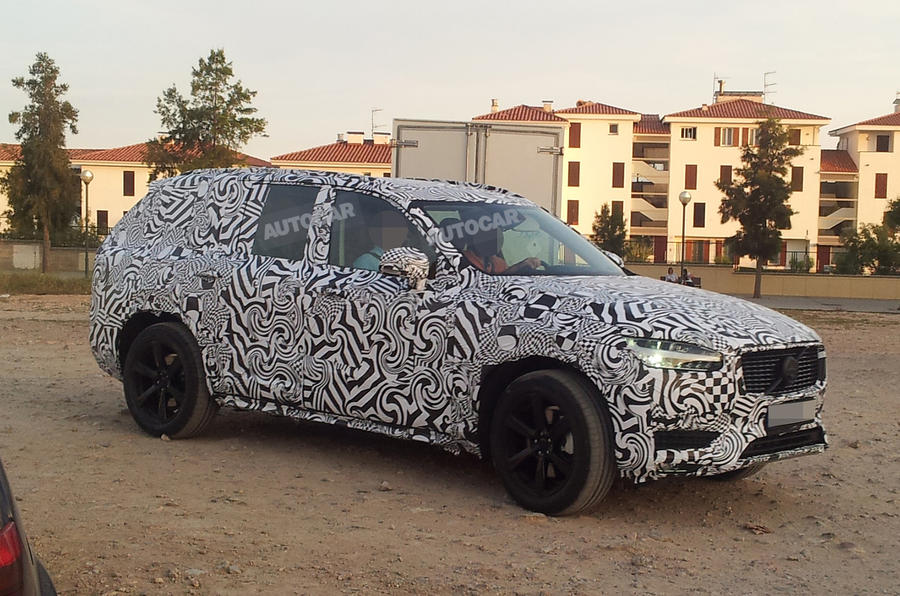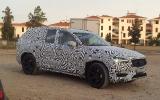The all-new Volvo XC90 has entered the final stages of development prior to receiving its public debut at the Paris motor show in October, as these latest spy pictures show.
While undisguised cars have been shown to a small group of journalists behind closed doors at the firm’s Arctic test facility, this latest prototype was spotted testing in familiar camouflage. The XC90 should be revealed in August ahead of its Paris debut.
The new seven-seat SUV is the first of a range of all-new models that the company hopes will propel it into the first division of automotive premium brands. The new XC90, codenamed V526, sticks closely to the formula set by its predecessor, which was launched in 2002.
The Mk2 model is 4.9m in length, making it 100mm longer than the outgoing model, as well as being slightly lower and wider. Interior space is said to be significantly improved for second and third-row passengers, while boot space with the third row of seats in place is increased.
Volvo has also rethought the control layout, with the XC90's interior recently revealed. The centre of the dash is dominated by a 9.5in, tablet-like screen, through which all of the car’s functions can be controlled. There are only seven conventional switches on the fascia, including a combined volume and on/off switch for the entertainment system.
The main dials are displayed on a small TFT screen, which expands to a full-width configurable display on high-end models. The XC90 will also be equipped with new levels of passive and active safety systems as part of Volvo’s ‘Vision 2020’ plan, the goal of which is to ensure that no one is killed or seriously injured in a new Volvo from 2020.
The SUV is the first car to be based on Volvo’s new Scalable Platform Architecture (SPA), which will eventually underpin all future 40, 60 and 90-series models. Dennis Nobelius, vice-president of ‘Vehicle Line 90’, Volvo’s large model programme, said the SPA was flexible enough to cover all types of vehicle, from low-roof cars to SUVs.
“We want to have the best possible proportions [in the front-wheel drive class],” said Nobelius. “We have pushed the front wheels forwards and the A-pillars backwards to get a long bonnet. We have also restricted the platform to accommodating four-cylinder engines, although there will be everything from a mild hybrid to a pure electric version.”
The XC90, like its future sister models, will be powered by a range of Volvo’s own four-cylinder petrol and diesel VEA engines, which will be variously boosted by single and twin turbochargers or a combination of both a turbo and a supercharger.
One of the most powerful engines will be a 300bhp petrol unit using a turbo and supercharger. Beyond that, the XC90 will also come in hybrid form with an electric motor powering the rear wheels. Further down the line, a version of the XC90 equipped with an energy-harvesting flywheel on the rear axle is likely, while a pure electric version of the large SUV will have its batteries packaged in the centre tunnel and under the rear floor so interior space won’t be compromised.























Join the debate
Add your comment
No real spying going on here